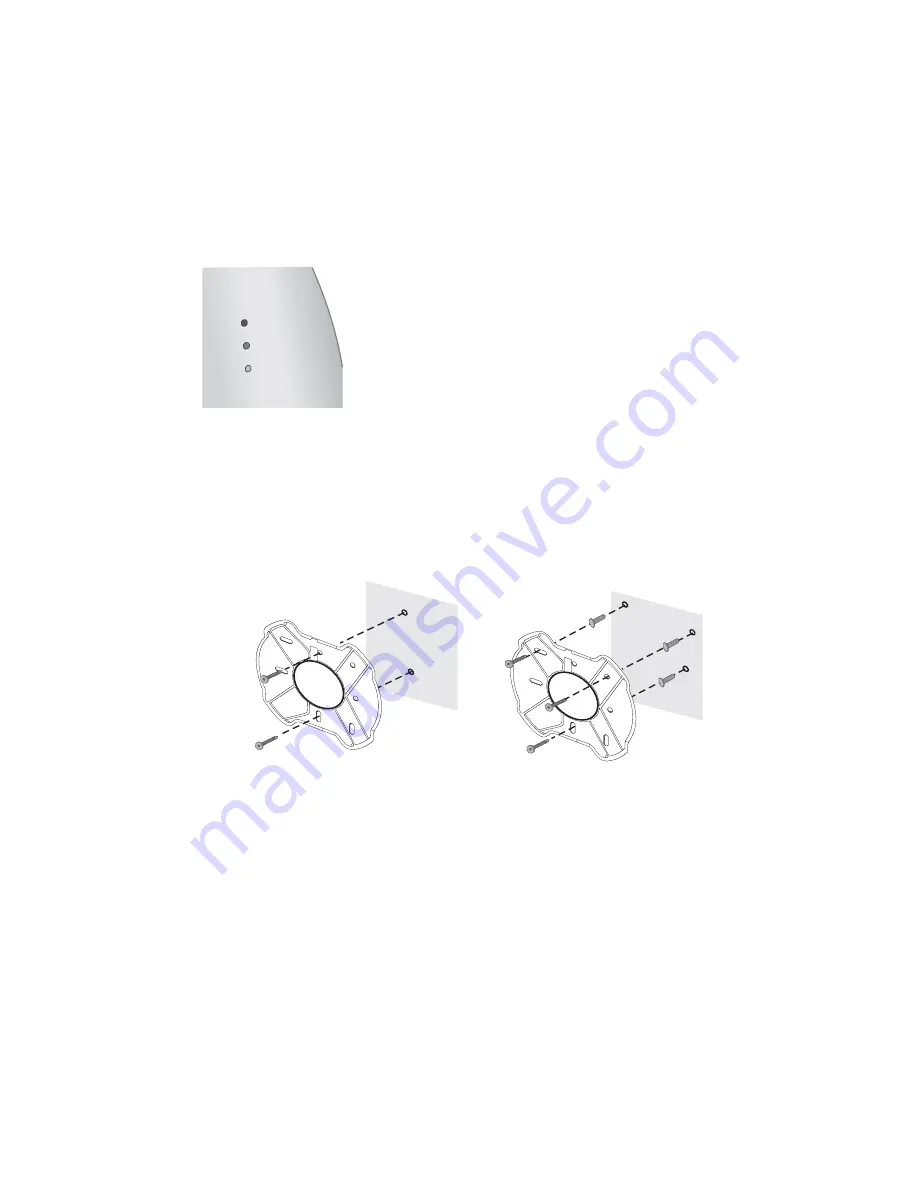
5
4
Check the LEDs
When power is connected, the access point LEDs light up. The illustration and the following table describe the
LEDs and their functions.
5
Wall Mount Installation
1
Install the mounting plate as shown in the following illustration, on either a stud (or other
hard wall surface), or onto drywall.
■
Allow for a clearance of at least 25 cm (10 inches) between the ceiling and the top of the
mounting plate.
■
Orient the bracket with the letter “B” at the top of the bracket.
■
For installation on a wall stud, install the top screw into the stud, as shown at left in the
illustration, and then vertically align the mounting plate before installing the
bottom screw.
■
For installation on to drywall, mark three screw holes using the mounting plate as a
template for vertical alignment, as shown at right in the illustration above.
■
Use a 5-mm (3/16-in.) drill bit if using the plastic anchors provided.
■
For drywall mounts, you can route the cable through the center opening for a seamless
appearance using one of the methods illustrated below. Alternatively, you can simply
attach the Ethernet cable to the top of the unit, allowing it to trail along the wall.
Name
Description
Radio
LED blinks red to indicate radio activity. Faster blinking
indicates more activity.
Ethernet
LED lights yellow when 10 Mbps Ethernet link is
established. LED lights green when 100 Mbps Ethernet
link is established. LED blinks to indicate activity on the
Ethernet. Faster blinking indicates more activity.
Power
LED lights green when operational code is running. LED
lights yellow when a power-on fault occurs.
RADIO
ETHERNET
POWER
If installing into drywall, use 3 plastic
anchors and 3 screws
.
If installing into a stud or other
secure vertical surface, use 2 screws.
A
B
A
B


























